Viruses: a Group of Intracellular Parasites | Viruses and Diseases
A virus is a submicroscopic infectious particle composed of a protein coat and a nucleic acid core. Viruses, like cells, carry genetic information encoded in their nucleic acid, and can undergo mutations and reproduce; however, they cannot carry out metabolism, and thus are not considered alive. Viruses are classified by the type of nucleic acid they contain, and the shape of their protein capsule.
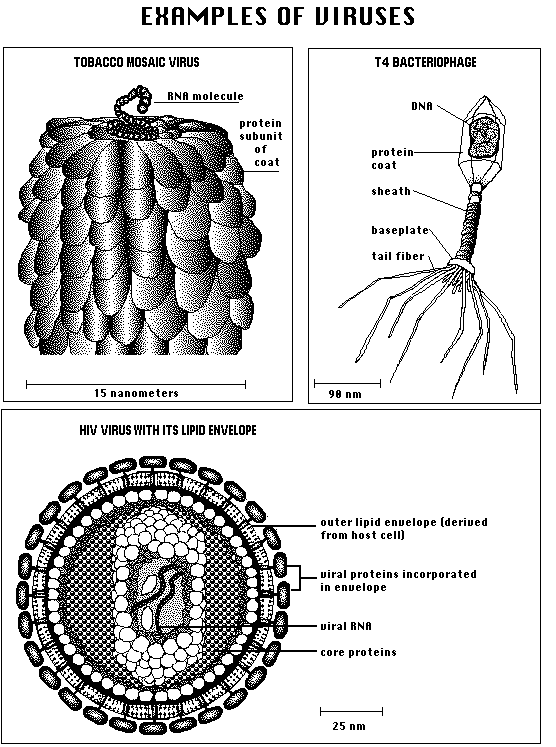
The above image is from http://www.gene.com/AE/AB/GG/examples_of_viruses.html.
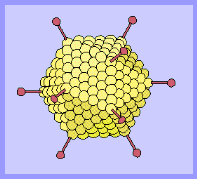
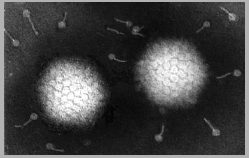
The above image is from http://www.uct.ac.za/depts/mmi/stannard/adeno.html
The Adenovirus is a DNA virus that causes colds and "pink eye".
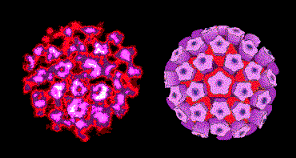
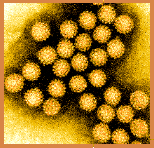
The above image is from http://www.uct.ac.za/depts/mmi/stannard/papillo.html
The Papillomavirus is a DNA virus that causes warts. These infectious particles are small, about 15 nm in diameter.
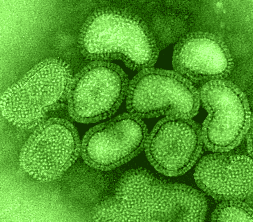
The above image is from http://www.uct.ac.za/depts/mmi/stannard/fluvirus.html
The Influenza virus causes the flu. It has RNA as its genetic material instead of DNA.
Several different replication cycle types are known for viruses.

This animated GIF images is from: http://www-micro.msb.le.ac.uk/224/Phages.html
Bacteriophages invade the host cell, take over the cell, and begin replicating viruses, eventually lysing or bursting the host cell, releasing the new viruses to infect additional cells.
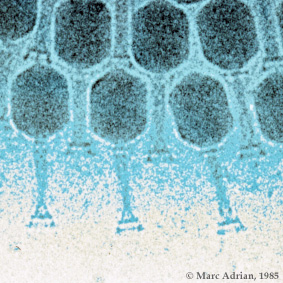
The above image is from http://www.uq.oz.au/nanoworld/t4bphage.jpg
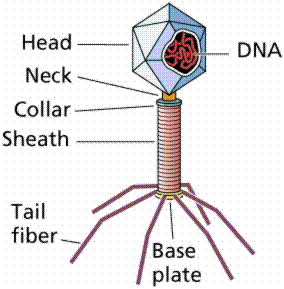
The above image is modified from http://www.whfreeman.com/life/update/.
Other bacteriophage can infect a host and insert their DNA into the host DNA.
Under certain conditions the viral DNA can detach and direct replication of new virus, eventually killing the host cell.
Once inside the cell, the nucleic acid follows one of two paths: lytic or lysogenic.
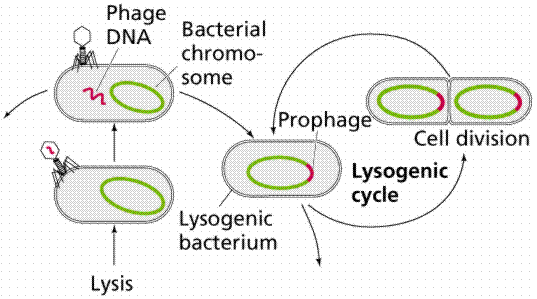
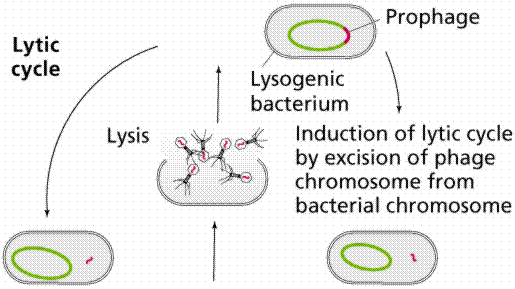
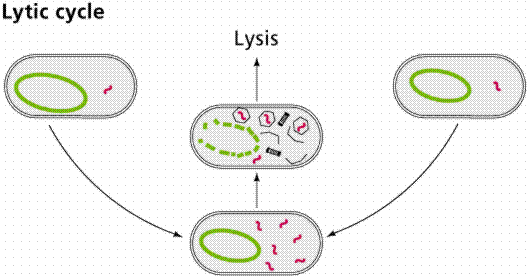
The above images are modified from http://www.whfreeman.com/life/update/.
Still other viruses invade animal cells and replicate without killing the host cell immediately. New viruses are released by budding off the host cell's plasma membrane, turning the host cell for a time into a viral factory.
The human immunodeficiency virus (HIV), a retrovirus associated with AIDS, replicates in this way.
Retroviruses
Retroviruses have RNA and the enzyme reverse transcriptase instead of DNA as their nucleic acid core. Once inside the host cell, reverse transcription (making DNA from RNA) is accomplished by the reverse transcriptase, turning the single-stranded RNA into DNA. This new DNA is incorporated into the host DNA, where it transcribes new viral RNA genomes, as well as the RNA to synthesize new reverse transcriptase and protein capsules.
Viruses cause a variety of diseases among all groups of living organisms. Viral diseases include the flu, common cold, herpes, measles, chicken pox, small pox, and encephalitis. Antibiotics are not effective against viruses. Vaccination offers protection for uninfected individuals.
Emergent Viruses
Viruses are usually quite specific as to their hosts and even to the types of cells they infect in a multicellular host. Recently some viruses appear to have shifted their host: HIV, hantavirus, and ebola appear to be either viruses shifting to a new (human) host or else viruses whose existence and effects are just now being realized by scientists and the general public.
Viruses would appear to be the simplest form of infectious particle. The discovery of viroids, nucleic acid without a protein capsule and prions, infectious proteins, subtracts another level of complexity. Both viroids and prions can cause diseases.
Email: mj.farabee@emcmail.maricopa.edu![]()
Last modified:
2000/01/05:09:00:49
The URL of this page is:
gened.emc.maricopa.edu/bio/BIO181/BIOBK/BioBookDiversity_1.html